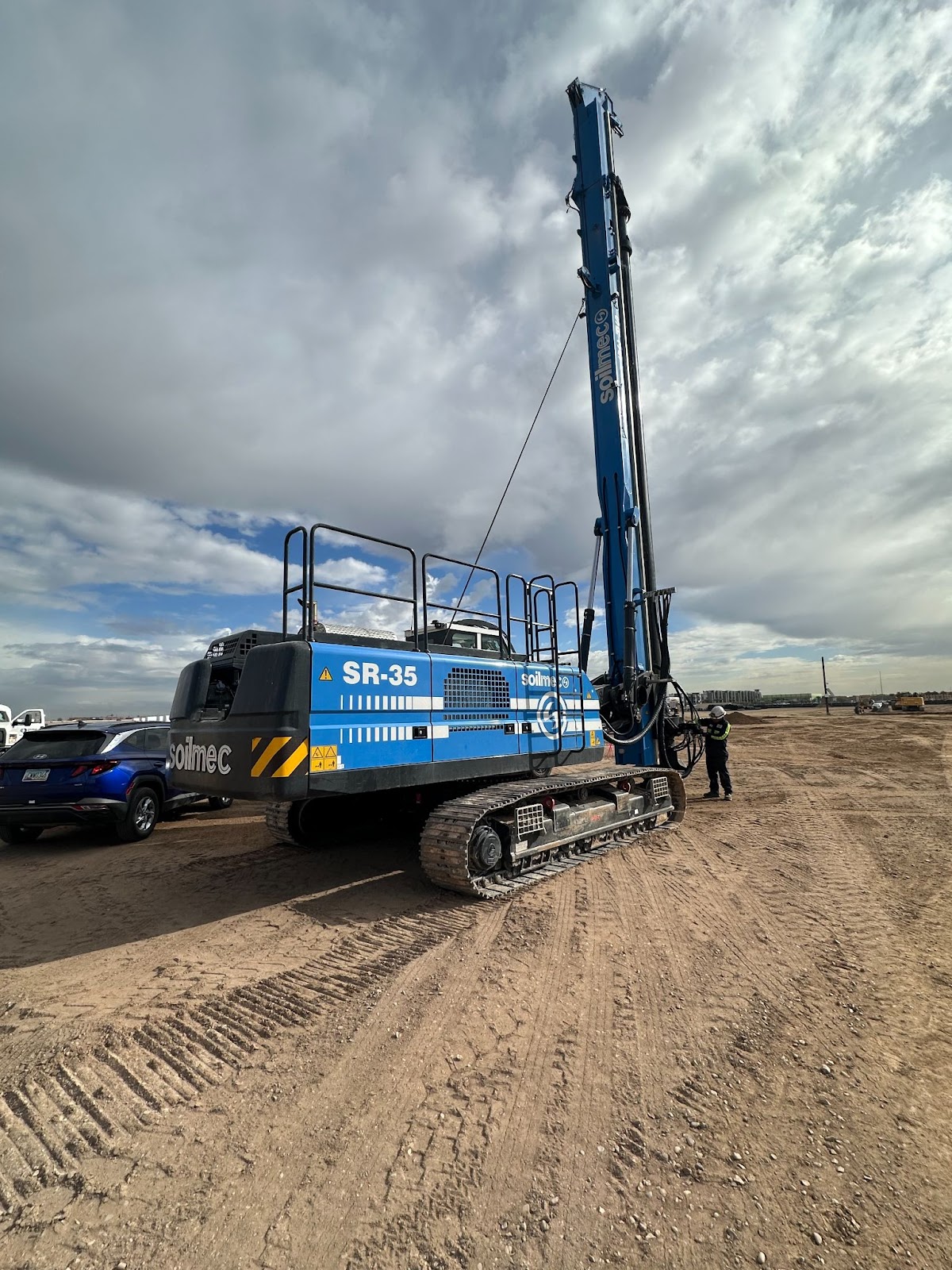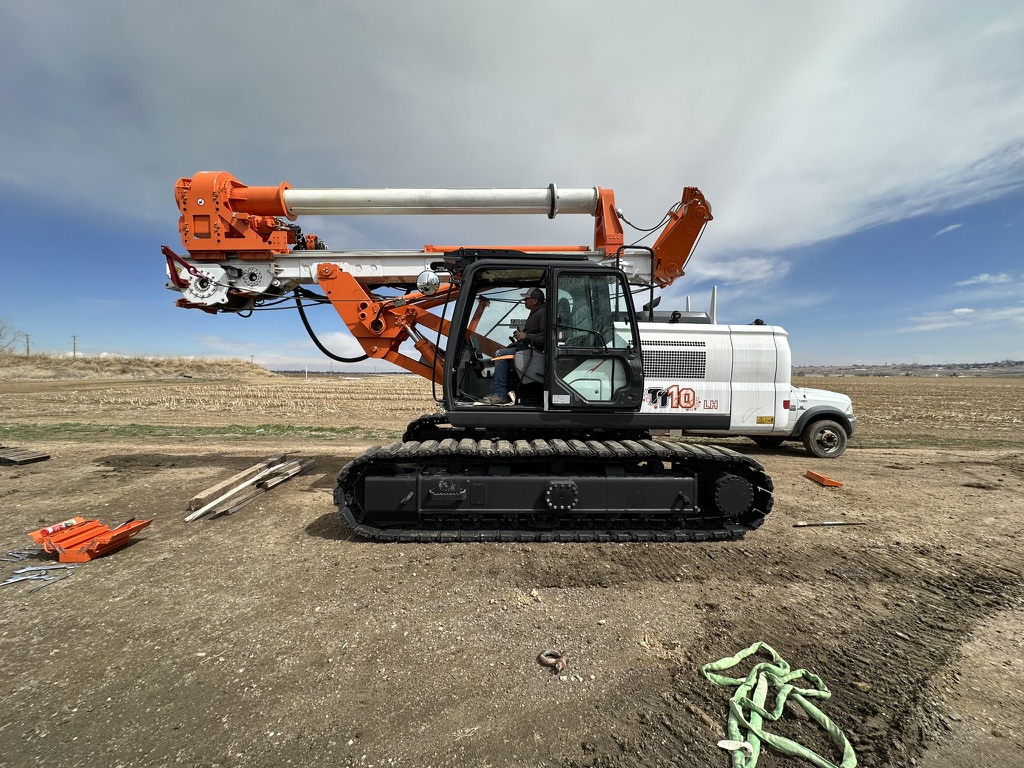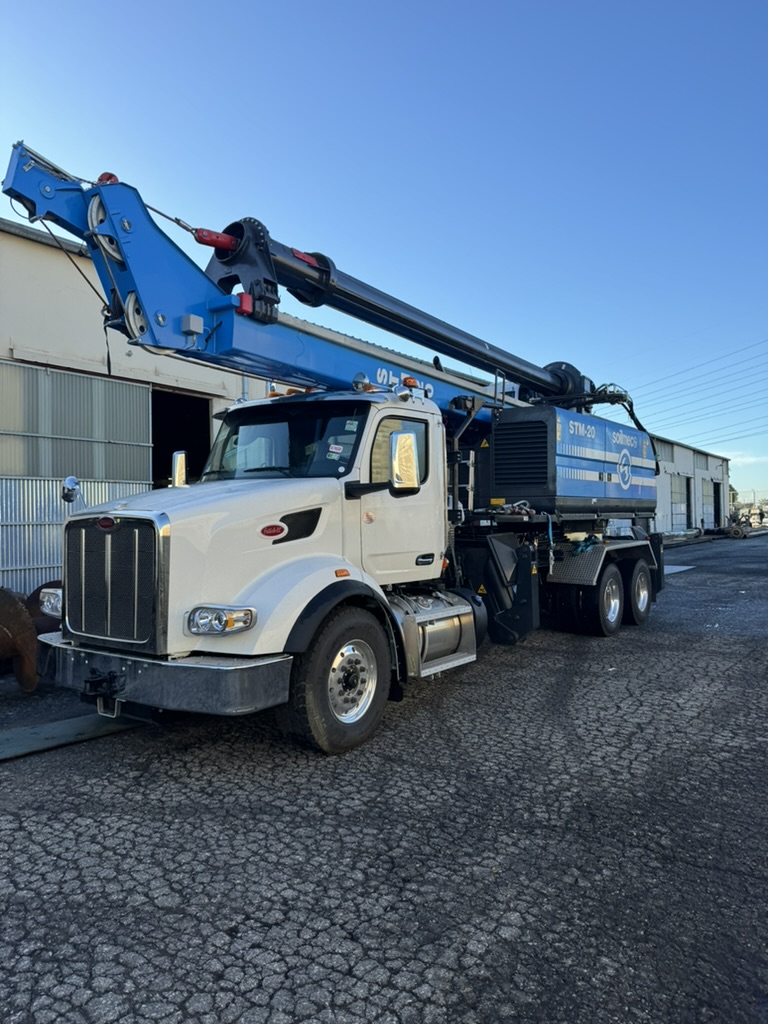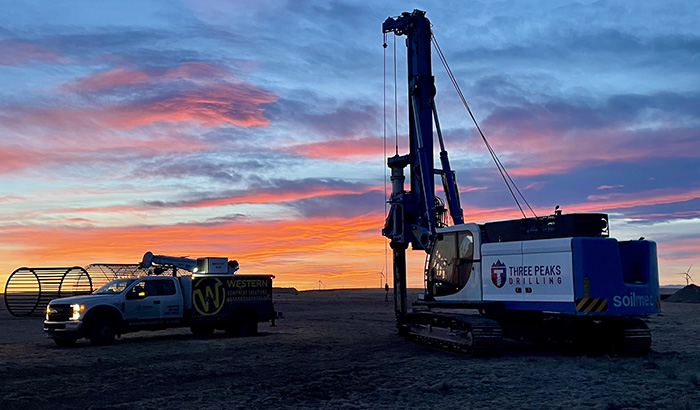Before you power up your machinery for the next big project, you’ll want to take the time to properly prepare your foundation equipment.
In this blog, we’ll dive into essential tips for getting your foundation equipment primed and ready for action. Whether it’s conducting thorough inspections, staying on top of maintenance, or ensuring all safety features are in check, we’ve got you covered with practical advice to keep your machinery running smoothly.
Join us as we explore the key steps to prepare your equipment for use, safeguarding its longevity, and optimizing your operational performance.
Understanding your equipment
When it comes to foundation drilling, one of the most important aspects is understanding your equipment. Knowing how it works and how to properly prepare it for use will help ensure safety and efficiency in your drilling projects.
Foundation drilling equipment typically consists of the following components: the drill rig, micropiles, attachments, tooling, and support equipment. Larger drilling rigs use Augers. Micropiles use smaller bits and hammers. When drilling with fluids, you’ll need polymers with special techniques.
The drill rig is the large machine that holds and operates the drilling tools. It is essential to understand the various parts of the drill rig, such as the engine, the mast, the rotary head, and the hydraulic system.
Before using your foundation drilling equipment, it is crucial to check all the components for any signs of damage or wear. This includes fuel and oil levels, examining the mast, checking the rotary head, ensuring the hydraulic system is in working order, and checking each tool.


Conducting a pre-use inspection
Begin by cleaning the equipment thoroughly. This removes any dirt, debris, or other substances that may hinder your inspection. Use a rag or a brush to remove any buildup, paying special attention to the nooks and crannies. By starting with clean foundation drilling equipment, you’ll get a clearer view of any potential issues.
Check the exterior
Inspect the equipment’s exterior for any visible damage or signs of wear. Take a walk around the equipment and look for dents, scratches, or loose parts. Pay attention to hinges, bolts, and handles, as they often get damaged during operation. If you spot any damage, make a note of it and have it repaired before using the equipment.
Examine the electrical components
If your foundation drilling equipment is powered by electricity, inspect the electrical components. Check the power cords, cables, and hoses for any signs of wear, such as fraying or exposed wires. Inspect the connectors carefully to ensure they are secure and undamaged. Faulty electrical components pose serious safety risks, so it is essential to repair or replace them immediately.
Assess the fluid levels
Foundation drilling equipment often relies on fluid systems for optimal performance. Check the fluid levels in the hydraulic reservoirs, fuel tanks, and lubrication systems. Make sure they are filled to the recommended levels. This is an important step that helps prevent overheating or damage to the equipment during operation.
Inspect the moving parts
Next, examine the moving parts of the equipment. Look for any signs of wear, misalignment, or damage. Inspect the rotary, augers, and clamps for any looseness or abnormal movement. Ensure that all the parts are properly lubricated, and if required, apply grease in the designated areas. This will prevent excessive friction, extending the life of your equipment.
Test the safety features
Safety should always be a top priority when operating foundation drilling equipment. Test the safety features, such as emergency stop buttons, safety switches, and guards. Ensure that they are functioning correctly and provide the necessary protection. If any safety feature is not working as intended, consult a professional to repair or replace it before using the equipment.
Verify calibration and measurement devices
Some foundation drilling equipment may include calibration or measurement devices like depth gauges or pressure sensors. Verify their accuracy before use. Use a known standard or reference object to check if the readings are correct. This step is vital to ensure accurate results and avoid any inaccuracies during your drilling operations.


Cleaning and maintenance
When it comes to foundation drilling equipment, it’s important to keep it clean and well-maintained to ensure its longevity and efficiency. The cleaning and maintenance process doesn’t have to be a difficult task. By following a few simple steps, you can keep your equipment in tip-top shape and ready for any drilling project that comes your way.
Removing debris
The first step in the cleaning process is to remove any debris that may have accumulated on your equipment. Take a soft brush or cloth and gently sweep away any dirt, dust, or mud from the surfaces of the equipment. Pay close attention to hard-to-reach areas, such as crevices or joints, where debris may easily build up.
Cleaning with water
Once the debris has been removed, it’s time to give your equipment a good wash. Fill a bucket with warm soapy water and dip a sponge or soft brush into the mixture. Using gentle strokes, scrub the surfaces of your equipment, ensuring that all areas are thoroughly cleaned.
Lubrication
To keep your equipment running smoothly, regular lubrication is essential. Using a lubricating oil recommended by the manufacturer, apply a few drops to the moving parts of your equipment, such as gears and bearings. This will help reduce friction and prevent wear and tear.
Inspections and replacements
Regular inspections are an important part of equipment maintenance. Check for any signs of wear or damage, such as loose bolts or cracks. If you notice any issues, it’s crucial to address them promptly to prevent further damage. Replace any worn-out parts with new ones as recommended by the manufacturer.
Ensuring safety features are functional
As we’ve mentioned, when it comes to using foundation drilling equipment, safety should always be a top priority. It is important to make sure that all the safety features of your equipment are in good working condition before you start using it.
Manufacturer’s instructions
First and foremost, always remember to read the manufacturer’s instructions and guidelines for safety. These instructions are there to help you operate the equipment safely and effectively. Never overlook or ignore them, as they contain valuable information on how to inspect and test the safety features of your equipment.
The emergency stop button
One of the primary safety features of foundation drilling equipment is the emergency stop button. This button is designed to immediately shut down all the functions of the equipment in case of an emergency.
To ensure its functionality, locate the emergency stop button on your equipment and press it. If the equipment stops immediately, then the emergency stop button is working properly. If it doesn’t stop or there is a delay, notify a supervisor or a maintenance professional to have it inspected and repaired.
Safety guards or shields
Another important safety feature is the safety guards or shields. These are meant to protect the operator and others from potential hazards during drilling operations. Take a look at the safety guards and shields on your equipment. Make sure they are securely in place and not damaged in any way. If you detect any cracks, breaks, or misalignment, do not use the equipment until they are repaired or replaced.
Inspect the safety harness and attachment points
Inspect the safety harnesses and harness attachment points. Safety harnesses are designed to prevent falls and injuries while working at heights. Check the harnesses for wear and tear, frayed straps, or loose buckles. Ensure that the attachment points on the equipment are strong and secure.
If you find any issues, replace the harness or repair the attachment points before using the equipment.
Ensure the alarms are working properly
In addition to the above safety features, it is crucial to test the functionality of the alarm systems on your foundation drilling equipment. Alarms are often installed to warn the operator or surrounding workers of any potential dangers or malfunctions.
Activate the alarms and ensure they are loud and clear. If the alarm volume is faint or not working at all, have it fixed immediately.


Tire and track inspection
Tires and tracks are an important part of foundation drilling equipment. They allow the machine to move efficiently and effectively on various terrains. Before using your drilling equipment, inspect and ensure that the tires and tracks are in good condition.
Firstly, let’s discuss tire inspection. Begin by examining the overall condition of the tires. Look for any visible signs of damage, such as cuts, bulges, or worn-out treads. These affect the equipment’s stability and maneuverability. If you notice any major damage, you’ll want to replace the tires before using the equipment.
Next, check the tire pressure. Ensure that the pressure is within the manufacturer’s recommended range. Underinflated tires cause poor traction, while overinflated tires may lead to punctures or blowouts. Use a pressure gauge to measure the tire pressure accurately. If necessary, adjust the pressure by adding or releasing air until it matches the recommended level.
Furthermore, inspect the tire valves. These valves allow for proper inflation and deflation of the tires. Ensure that they are not damaged or leaking. If you notice any abnormalities, such as cracks or leaks, replace the valves with new ones before using the drilling equipment.
Moving on to track inspection, start by visually inspecting the tracks for any signs of damage or wear. Look for cracks, loose parts, or missing segments. Damaged tracks can affect the equipment’s stability and may even cause accidents. If you find any major issues, it is essential to make the appropriate repairs as necessary before using the equipment.
Additionally, examine the track tension. Tracks that are either too loose or too tight can cause serious operational problems. To check the tension, refer to the equipment’s manual for specific instructions. Generally, you can measure the tension by applying pressure with your hand or foot to assess the amount of deflection. Adjust the tension accordingly to ensure optimal performance.
Be sure to inspect the track rollers and idler wheels as well. These components support the equipment and help it move smoothly. Look for any signs of damage or wear on the rollers and wheels. If you notice any abnormalities, replace them as necessary.
Get your equipment from Western Equipment Solutions
Ready to ensure your equipment is in top condition for your next project? Turn to Western Equipment Solutions for all your equipment needs. From expert advice on preparation and maintenance to providing the latest in high-quality machinery, we’re here to support you every step of the way.
Don’t let foundation equipment issues slow you down. Contact Western Equipment Solutions today, and let us help you achieve seamless operation and optimal performance on every project. Your success is our priority.

